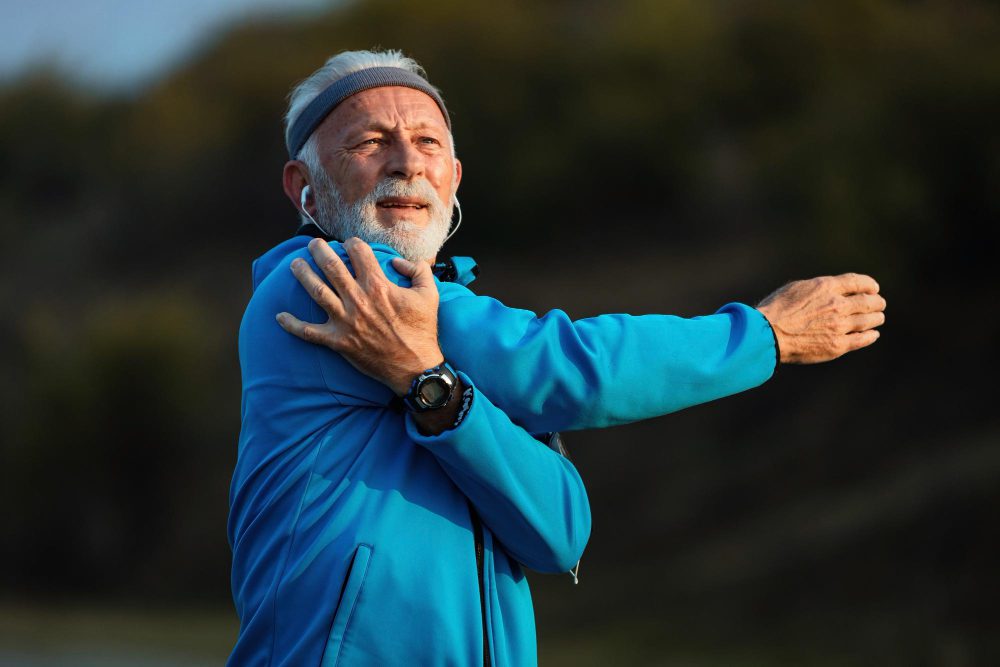Table of Contents Show
✍️ AI is summarizing:
Losing muscle power after 40 is one of the lesser-known yet most impactful challenges of aging. While many people focus on strength training to stay fit, few realize that muscle power—the ability to exert force quickly—declines at a much faster rate than strength itself.
This drop in explosive capacity can dramatically affect daily activities, from climbing stairs to reacting swiftly in everyday scenarios. In this article, we’ll explore the science behind this phenomenon, what makes muscle power so essential, and how you can take smart, proactive steps to fight back against its decline.
Related post:
- Say Goodbye to Back Pain: 6 Best Stretches for Desk Workers That Actually Work
- Doctor-Backed Lifelong Fitness Strategies to Stay Strong, Mobile, and Ageless
- The Ultimate Guide to Seaweed Benefits: Unlocking Nature’s Superfood
Understanding the difference: Muscle power vs. muscle strength after 40

Aging is a natural process, and one of the most noticeable effects on the body is losing muscle power after 40. Unlike muscle strength, which pertains to how much force a muscle can exert, muscle power combines force and velocity, emphasizing how quickly and explosively that force can be delivered. This distinction is crucial, especially as we enter our 40s and beyond, when the decline in muscle power becomes more pronounced.
The alarming rate of losing muscle power after 40

Research reveals that we lose muscle power at a faster rate than muscle strength. While typical estimates suggest a loss of 0.5 to 1 percent of muscle mass per year after the age of 40, losing muscle power after 40 can mean a drop of 2 to 4 percent annually. This decline is significant because muscle power is a critical factor in our ability to perform everyday activities, such as climbing stairs or getting up from a chair. Unfortunately, scientists are still unraveling the reasons behind this accelerated degradation of muscle power as we age.
What science says: Recent studies on muscle power loss

A recent study conducted by researchers at top research universities investigated this phenomenon across various age groups, comparing young adults, older adults, and very old adults. They focused on measuring the maximum power produced by the quadriceps, using advanced techniques like magnetic brain stimulation and electrical stimulation of the muscles to differentiate the contributions from the brain and the muscles themselves. The findings confirmed a stark difference: although strength and power both decline with age, losing muscle power after 40 happens at a steeper rate, indicating that the muscles themselves are not contracting as powerfully.
Why muscle power fades faster: The physiological causes

The reasons behind losing muscle power after 40 may vary. Muscle tissues may become marbled with fat and scar tissue, hindering effective contractions. Additionally, the elasticity of tendons may diminish, complicating the rapid transmission of force. Notably, it’s suggested that we lose fast-twitch muscle fibers, responsible for explosive movements, more quickly than slow-twitch fibers, which results in a reduced ability to generate power as we age.
Staying strong after 40: How to combat muscle power loss
So, what can be done to combat this decline? First, it’s crucial to recognize that staying physically active alone isn’t sufficient for maintaining muscle power. Studies have shown that general activity levels, such as simply counting daily steps, only account for a minimal portion of variance in muscle power. Thus, a more targeted approach is necessary.

Incorporating explosive movements into your workout regimen is vital, especially when facing the challenge of losing muscle power after 40. Plyometric exercises, such as box jumps and bounding, can help retain and enhance muscle power. However, outdoor activities can be particularly effective as they not only provide physical benefits but also boost mental well-being. Here are some outdoor activities to consider:
- Trail running: The varied terrain of trails requires quick adjustments in movement, engaging your fast-twitch muscles, and improving power.
- Hiking with intervals: Incorporate bursts of speed during your hike, such as sprinting up hill sections, to mimic plyometric training.
- Cycling: Engage in interval training on a bike, alternating between high-intensity sprints and recovery periods—a great way to build explosive strength in your legs.
- Rock climbing: This full-body exercise requires explosive movements and quick decision-making, enhancing both power and functional strength.
- Outdoor sports: Activities like soccer, basketball, or ultimate frisbee involve quick, powerful movements and provide a fun way to maintain muscle power.
Incorporating these outdoor activities into your routine not only helps with losing muscle power after 40, but also promotes a healthy, active lifestyle. Mix it up with plyometric exercises and resistance training for a well-rounded approach. Ultimately, while age may take its toll on muscle power, staying proactive about fitness, particularly through outdoor, explosive exercises, will enhance our overall quality of life as we age.
Conclusion
Although losing muscle power after 40 is a natural part of aging, it doesn’t mean we’re powerless to stop it. By understanding the difference between muscle strength and power and embracing targeted workouts, especially those involving explosive movements and outdoor activities, we can preserve our vitality and functionality well into our later years.
The key is to move with intention, train smart, and never underestimate the power of staying active. While aging is inevitable, how we move through it is entirely up to us. Ready to explore the world? Follow ExoTrails on Facebook to discover new destinations, travel hacks, and more.










